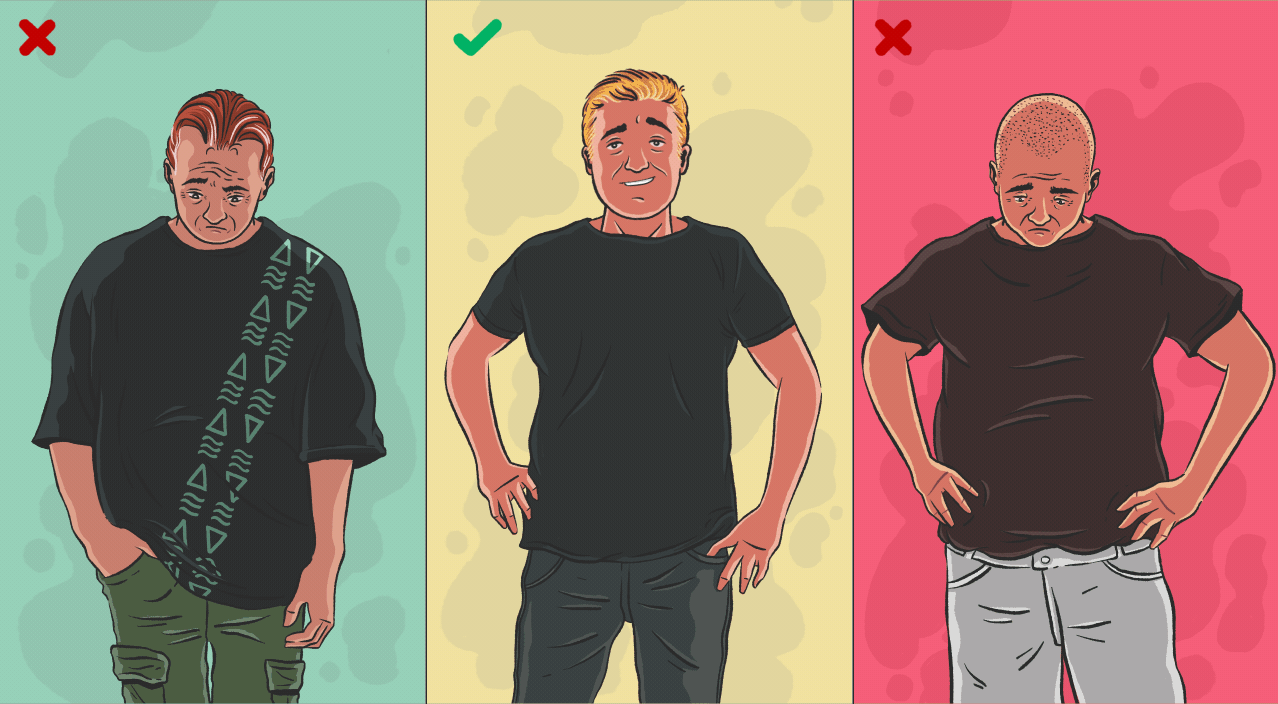If you’re looking to show off an impressive physique this summer, you can spend hundreds on a gym membership and chug kale/quinoa/wheatgrass smoothies until your skin turns green. Or, you can just buy a good T-shirt. Here’s how:
Find the right material.
“Stick to fabric that weighs 6 oz or more,” says Lee W. Johnson, founder of Old Bull Lee clothing. “Heavier materials have a tendency to soften and create more visual ambiguity.”
Some online retailers tell you the shirt material’s weight right in the listing. Or just look for the term “heavyweight.”
Avoid “tube” shirts.
Men’s T-shirts are commonly made two ways. “Either the body is made from a single piece of fabric that was woven into a tube shape and arms are attached at the top, or the shirt was assembled by using two separate pieces, one for the front and one for the back,” says Johnson.
The second style — called a side seam — “is designed to more accurately mimic the proportions of the human body.” You won’t likely find the term “side seam” on tags or in online listings, but they’re easy to spot thanks to the seam line running from under the armpit to the bottom hem on each side.
“Side seam shirts are often more flattering,” says Johnson.
Shop the best brands.
Patrick Kenger, a menswear personal stylist, is loyal to specific brands thanks to their versatility, affordability and quality. Buck Mason has great quality cotton, especially the heavier weight stuff, he says. Uniqlo is another affordable, good quality brand. And Son of a Tailor offers higher-end, completely customized tees.
Johnson also recommends shopping “heritage brands” like Dickies and Carhartt, whose work shirts look good on bigger guys, and have a proven track record of quality and durability.
Choose the right pants.
Men typically carry weight in the upper halves of their bodies, which means that shirt/pants combos will look best if the colors are similar, but not exact.
“Dark shirts worn with light pants can oftentimes appear top-heavy and atypical,” says Johnson. “People will recognize your shirt and pants as two separate things — one thing placed on top of another — rather than a single outfit.”
To appear as elongated (and thin) as possible, use complementary colors. “Avoid any drastic and striking color contrasts between the top and the bottom,” Johnson adds. “Dark jeans with a medium blue shirt, or light colored khakis with a white shirt will help unify your outfit.” They’re not exactly the same, but they’re in the same color families.
Resist the temptation to tuck.
Tucking in your shirt is fine if you’re a restaurant valet. But it’s not doing your spare tire any favors.
“If you have a belly, tucking in your shirt will only highlight that area,” says California-based fashion stylist Abby Young. If tucking in your shirt is your way of trying to look polished, wearing a jacket or sport coat calls less attention to your midsection while still looking formal.
Don’t wear a tent.
It can be tempting to buy a big, billowy 2XL shirt and call it a day. But Kenger cautions against what is essentially a psychological comfort. You’ll “just end up looking like a box,” he says.
You want to aim for the middle ground, which is a shirt that’s more true to your size, but might have a bit of extra fabric around the sides. It’ll be just enough to hug your body in a way that will highlight your best attributes while concealing your stomach, he says.

Luke Brookes
Follow Article Topics: Money-&-Career




